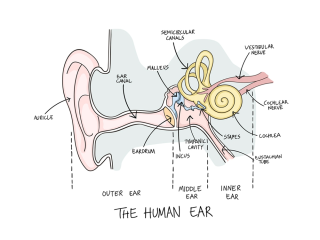Posted Wednesday March 11, 2020
If allergies, sinus troubles or a cold have left your ears “plugged” or feeling full, and sound is muffled, your eustachian tubes may be blocked. This is often not a problem. We all know how to “pop” our ears: take a deep breath, pinch your nostrils, and with mouth shut, blow. But if your ears won’t clear, you could have eustachian tube dysfunction.
The eustachian tubes connect your throat to your middle ears. They normally remain closed, but when you sneeze, swallow or yawn they open up, which keeps air pressure equalised and prevents fluid building up. Equal air pressure on both sides of the ear drum, and a middle ear free of mucus, helps the ear drum vibrate so we can hear. But if the tubes are inflamed and blocked they can’t drain or balance air pressure, which causes “eustachian tube dysfunction”.
As well as plugged ears and muffled sounds, ear pain, tinnitus and sometimes loss of balance are common symptoms. Children are particularly susceptible because their tubes are shorter and straighter than an adult’s, and germs and fluids are easily trapped in the middle ear.
Treatment
Symptoms usually go away in a few days without treatment. Some “exercises” you can do to open up the tubes include swallowing, yawning, or chewing gum. You can even try blowing up a balloon. If you think your baby has blocked tubes, feeding or a pacifier will encourage their swallow reflex to help clear their ears.
If your ears aren’t getting better, you could try a decongestant to reduce swelling, or an antihistamine or steroid nasal spray to manage your allergies. But if after more than 6 weeks your ears still don’t settle, go see your family doctor. Often, children with chronic ear infections have grommets inserted that stay in for up to 18 months before falling out on their own accord.



